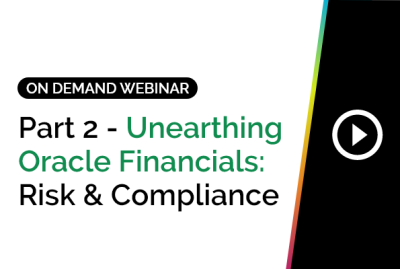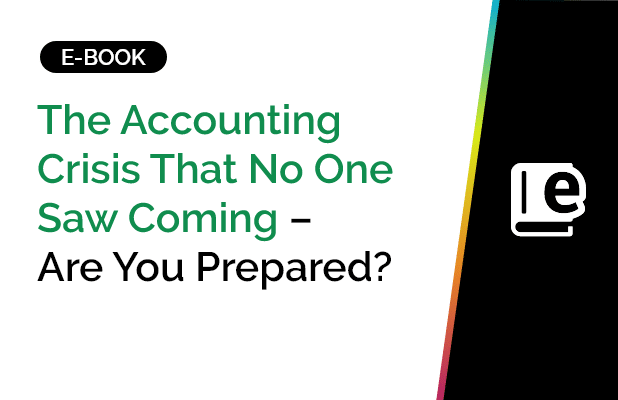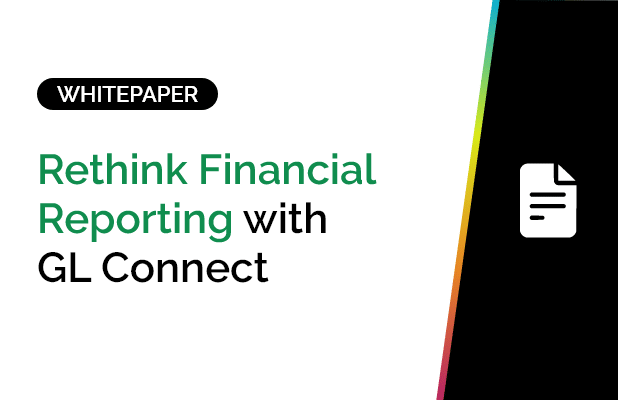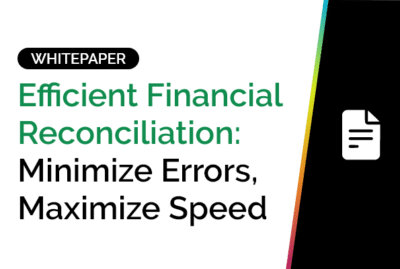- Blog Article
Steps to Migrate Oracle Database to Cloud: A Comprehensive Guide for 2025
Gartner predicts that worldwide end-user spending on public cloud services is forecast to total $723.4 billion in 2025, up from $595.7 billion in 2024. This year, enterprises will also see 80% of their workload moving to cloud.
The writing is on the wall – savvy organizations are moving or have already moved to the cloud. They are looking to achieve optimal performance, improve scalability, and reduce IT costs.
Oracle users are no different. However, the steps to migrate Oracle database to cloud is a complex process. It requires due consideration, careful planning, and spot on execution.
In today’s guide, we will deep dive into the steps to migrate Oracle database to cloud. We will include best practices and critical considerations to ensure a transition where you neither lose data nor business time, and your reporting workflows continue without disruption.
Steps to Migrate Oracle Database to Cloud
Now, let’s look into the key steps involved in migrating Oracle database to the cloud.Step 1: Define Your Cloud Migration Strategy
Questions to Ask #1 – What Are Our Business Objectives?
Before starting any cloud migration project, it is crucial that organizations have their business goals and expected benefits crystal clear. Typically, enterprises have one or more of the following objectives when migrating Oracle database to cloud:
- Reduced IT infrastructure costs
- Improved database performance and availability
- Better disaster recovery and security
- Increased scalability for future enterprise growth
Questions to Ask #2 – What Should be the Optimal Migration Approach for Oracle Database that Works for Our Business?
Migrating Oracle database to cloud can look different for different organizations, based on their needs. Typically, organizations choose one of the following strategies:
- Life & Shift: Also known as rehosting, in this approach the database is moved with minimal changes. This strategy works for enterprises looking for accelerated cloud migration.
- Replatforming: Slight modifications are made to the database to improve cloud performance.
- Refactoring: Applications are optimized for cloud native features. This strategy typically requires more time and effort.
Questions to Ask #3: How Do We Select the Right Cloud Provider for Our Needs?
We’re in 2025. According to industry estimates, there are over 1,000 cloud service providers across borders. Oracle Cloud Infrastructure (OCI), Amazon Web Services (AWS), Google Cloud Platform (GCP), and Microsoft Azure are some of the bigger names among them.
Choosing the right service provider can be based on the enterprise’s unique needs and budgets. Typically, organizations evaluate cloud service providers on the following parameters:
- Cost and pricing models: Pay as you go Vs. Reserved instances
- Security features: Such as encryption and compliance
- Performance and scalability features: Like auto-scaling, high availability
- Integration features: Available on Oracle Cloud, AWS, Azure, Google Cloud
Step 2: Assess & Prepare Your Oracle Database
Questions to Ask #1: Have We Performed a Pre-Migration Assessment?
Before you start migrating your Oracle database to cloud, you must:
- Identify database dependencies to minimize downtime
- Finalize storage and compute requirements
- Determine data size and complexity
- Analyze and address data compatibility issues, if any
Questions to Ask #2: Have We Backed Up Our Oracle Database Sufficiently?
A full Oracle database backup before migration minimizes data loss during the transition. Typically, Oracle users use tools like Oracle RMAN (Recovery Manager) to accomplish this.
Questions to Ask #3: Have We Optimized and Cleaned the Data on Legacy Database?
It is crucial to remove redundant or outdated data prior to migration. This reduces the time taken to migrate Oracle database and optimizes cloud performance.
Step 3: Execute the Oracle Database Migration
Questions to Ask #1: Which Migration Method Works Best for Our Oracle Database?
Every company has unique business needs and downtime tolerance. Typically, organizations choose their migration method based on these parameters. They apply one of the following methods in their steps to migrate Oracle database to cloud:
- Data pump export/import: Suitable for small to medium size databases with minimal downtime
- RMAN backup and restore: Suitable for large databases that need quick recovery
- Golden Gate replication: Suitable for zero downtime migrations
- Oracle Data Guard: Suitable for disaster recovery and real time synchronization
Questions to Ask #2: Have We Provisioned Our Cloud Resources?
Organizations must ensure that compute, storage and networking resources are provisioned in their cloud migration before they start the steps to migrate Oracle database to cloud.
Questions to Ask #3: Can We Start the Data Transfer Now?
Once the above steps to migrate Oracle database to cloud are completed, you can use the selected migration method to move your Oracle database to cloud. This ensures that your database, cloud, and overall organizational performance remain stable.
Questions to Ask #4: Have We Validated and Tested the Migration?
Once you have completed the above steps to migrate Oracle database to cloud, be sure to perform extensive testing. Enterprises typically test the following parameters:
- Connectivity and performance: This ensures that database queries run as required.
- Security and access controls: This testing confirms permissions and encryption testing to ensure data security.
- Application and compatibility: This step verifies that your enterprise applications integrate seamlessly with your brand-new cloud database.
Step 4: Optimize Post-Migration Database Performance and Security
Questions to Ask #1: Have We Implemented Cloud Security Best Practices?
Enterprises of all sizes, especially those in sensitive industries or consumer facing sectors, must ensure top-notch cloud security after completing the steps to migrate Oracle database to cloud. Some of these best practices typically followed by enterprises include:
- Encryption for data in transit and at rest
- Role based access for data security
- Monitoring of suspicious logins and unauthorized activity
Questions to Ask #2: Have We Automated Database Management?
Automation of database management saves precious time and resources for enterprises. They typically automate the following features:
- Auto scaling based on cloud demand
- Automated performance fine-tuning
- Scheduled backup and disaster recovery
Questions to Ask #3: Are We Monitoring and Optimizing Cloud Database Performance?
Steps to migrate Oracle database to cloud is not a one-time activity or a set-it-and-forget-it game. Savvy enterprises ensure that they are implementing real time monitoring and performance analytics to identify and address issues before they impact any business workflow, such as reporting.
Why Take Steps to Migrate Oracle Database to Cloud? The Key Benefits
Cloud migration has several crucial benefits for organizations of all sizes. Some of these include:
- Cost savings: BCG reports that companies can expect to save between 15-40% infrastructure costs by migrating workflows to the cloud.
- High availability: Cloud environments minimize downtime and automatic failover.
- Seamless scalability: Enterprises on the cloud benefit from the fact that storage and compute requirements can be expanded easily as and when needed
- Security improvements: Oracle reports that 6 out of 10 CXOs – a staggering 60% – report that cloud environments improve data security.
- Improved reporting and analytics: Cloud delivers real time data to enterprises and their business users, ensuring far better and faster decision making.
Common Challenges in Steps to Migrate Oracle Database to Cloud (and How to Overcome Them)
The steps to migrate Oracle database to cloud has significant benefits. But it is not a simple process. There can be some roadblocks in the migration process, such as:
Oracle Database Migration Challenge #1: Downtime During Migration
Typically, enterprises use Oracle GoldenGate for real-time database replication to minimize any downtime.
Oracle Database Migration Challenge #2: Risk of Data Loss
Organizations are advised to perform full data back up before migration to prevent data loss.
Oracle Database Migration Challenge #3: Application Compatibility
Enterprises must test their applications thoroughly after taking steps to migrate Oracle database to cloud.
Oracle Database Migration Challenge #4: Learning Curve for Business Users
With a new environment and often, new applications, the learning curve for business users can be steep. We often see this in the case of financial reporting workflows, when our customers migrate from Oracle EBS to ERP Cloud. The learning curve can disrupt reporting workflows and delay decision-making.
GL Connect solves for this and supports the cloud transition by offering Excel based reporting for database on both environments.
Streamline the Steps to Migrate Your Oracle Database to Cloud with GL Connect
Clearly, the steps to migrate Oracle database to cloud is a matter of careful planning, optimal execution, and post migration testing & optimization.
While cloud environments offer unmatched automation, security, and scalability, migration can be complex for organizations of all sizes.
The challenge of learning curve can disrupt reporting workflows and decision making. Matters exacerbate further when it comes to business-critical financial data and reporting.
The good news is that you don’t have to go it alone anymore! GL Connect makes cloud transition easier by providing the familiar Excel environment for financial reporting on the new cloud environment. This handholds your reporting workflows during and after cloud transition and minimizes reporting disruption.
Frequently Asked Questions: Steps to Migrate Oracle Database to Cloud
What are the biggest challenges when taking steps to migrate Oracle database to cloud?
Migrating an Oracle database to the cloud involves challenges like downtime risks, data loss, compatibility issues, and cost unpredictability. Careful planning, full database backups, and using real-time replication tools like Oracle GoldenGate can help mitigate these challenges.
How do I ensure my applications remain functional post-migration?
Application compatibility testing is critical. Run tests in a staging environment before full migration, ensuring smooth integration with the new cloud infrastructure. Tools like Oracle Cloud Infrastructure (OCI) Migration Assistant can help streamline testing.
How can I reduce cloud costs when migrating my Oracle database?
Optimizing costs requires choosing the right cloud pricing model, such as reserved instances for predictable workloads or pay-as-you-go for dynamic usage. Auto-scaling, database tuning, and resource optimization also prevent unnecessary costs.









